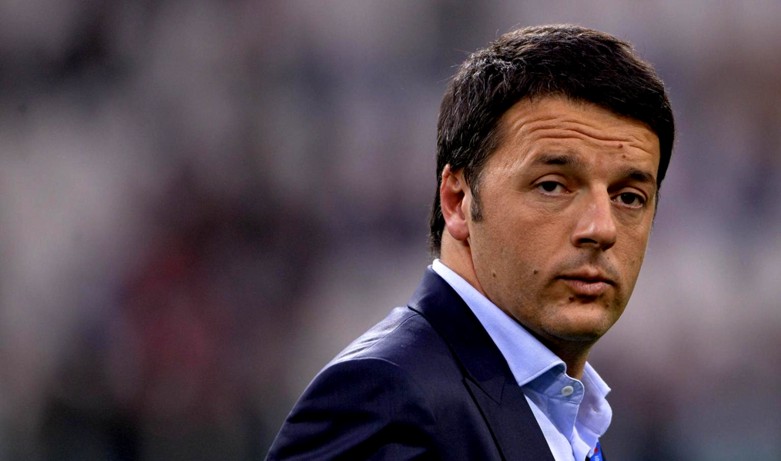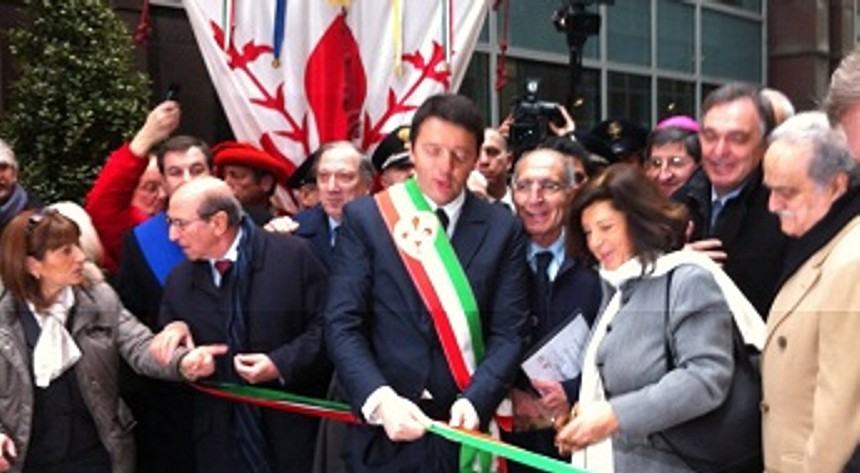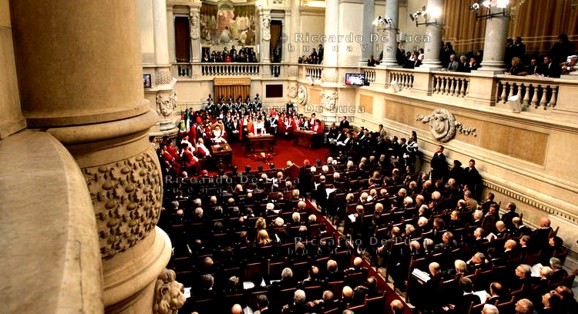
Category: The wider contexts
Tuesday, April 01, 2014
With Radioactive Knox Campaign Not On Agenda, US & Italian Leaders Give Each Other Big Boosts
Posted by Peter Quennell
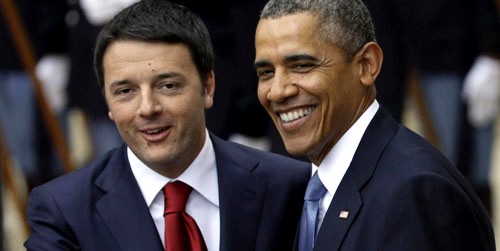
Prime Minister Renzi needs all the support he can get for his economic-recovery program, President Obama the same for the Ukraine.
Here’s a Rome-based blog our main poster Yummi pointed out, which describes in detail chronologically how the productive four days went.
And Mr Obama went out of his way to give Mr Renzi a lot of praise as Reuters described
Renzi, Italy’s youngest ever prime minister, has set a testing agenda of economic and constitutional reforms to help the eurozone’s third-largest economy recover from its longest recession since World War Two.
“I want to say that I’ve just been impressed by the energy and vision that Matteo’s bringing to his position,” Obama said during an hour-long joint news conference in Rome.
“There’s a seriousness and ambition of ideas, and I think the spirit and the energy of the Italian people has the opportunity to be unleashed in a way that will be good for Italy, but it will also be good for Europe,” he said.
“So it’s wonderful to see this new generation of leadership coming to the fore.”
The comments were a welcome boost to Renzi, who took over leadership of Italy’s cross-party ruling coalition after a party coup last month, pledging to push forward more aggressively on reforms than his predecessor Enrico Letta.
Not a single mention by any official or any media outlet of the radioactive Knox campaign. NOT ONE. Ask any justice official in either capital city, and the responses now are ““Knox who?” and “She should go quietly and serve her time”.
She’s old news. Let’s move on.
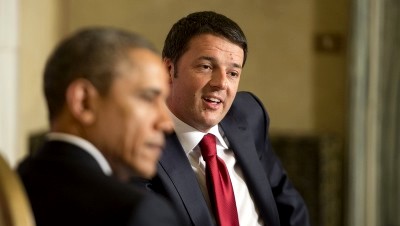

Saturday, March 22, 2014
Italy’s 13th Foreign Oscar Winner Shows A Very Beautiful Side Of Rome
Posted by Peter Quennell
Since 1950 Italian films have won more Foreign Oscars than those from any other country.
And now this. The Great Beauty. Said by some to be a La Dolce Vita for the 21st century and by others to be a Great Gatsby for Italy.
The movie was re-released on 14 March after a limited run late last year and is still playing in many art houses in Europe and the US. The Great Beauty has a 91% positive rating among the critics on Rotten Tomatoes and the reviews sure take off in many different directions.
The Los Angeles Times review started off thus:
As its name promises, “The Great Beauty” is drop-dead gorgeous, a film that is luxuriously, seductively, stunningly cinematic. But more than intoxicating imagery is on director Paolo Sorrentino’s mind, a lot more.
One of Italy’s most impressive contemporary filmmakers, Sorrentino has a superb sense of how to fill a wide screen and, working with his longtime cinematographer Luca Bigazzi, a wizard with camera movement, his visuals display the intoxicating richness of color 35-millimeter film in a way few contemporary ventures can match.
When Sorrentino says in the press notes that “a single shot, if well thought out and balanced, can enthrall and say more than ten pages of dialogue,” he’s as good as his word
Another small shot in the arm for Rome where everybody seems to be headed these days. Well done Rome and well done Italian film industry where movies mainly for adults are still happening.
Monday, February 24, 2014
Power Shift In Italy Very Unfavorable To Anyone So Stupid As To Thumb Their Noses At Italian Justice
Posted by Peter Quennell
Meet 39-year-old Matteo Renzi
Mr Renzi was sworn in by the President of the Italian Republic on Saturday as the new Prime Minister of Italy. As a top German newssite remarks, he is looking like a much-needed breath of fresh air.
Mr Renzi is colorful and dynamic and very popular, and may become one of the most effective leaders in recent Italian history and a major player on the world stage. Mr Renzi comes from FLORENCE where he was the popular and effective mayor.
Unlike the Berlusconi faction in parliament (which once included Giulia Bongiorno) Mr Renzi is a big friend of law and order, police, and justice. In the image at bottom you can see him opening the huge Palace of Justice in Florence with all the top officers of the court who just organized the appeal.
This is very bad news for Sollecito and Knox and their foolish gangs, as Mr Renzi will be very unlikely to look kindly on that same Florence court - and any court in Italy including, especially, Cassation - being flouted by convicted perps and made to look weak.
If the new Minister of Justice sends an extradition request to his desk, you can bet that he’ll send it on to the United States. And the US, very keen to stay on good terms with Italy as one of its 2-3 most reliable allies, will exhibit little if any resistance to the extradition of Knox.
More bad news for Sollecito and Knox
The sardonic Italian media is paying very close attention to the ongoing game of each of them pushing the other closer to the flames, and the almost-certain prospect of the two of them and Rudy Guede explosively flying apart.
The Italian media is picking up on signs that Sollecito has become highly resentful at his on-again off-again rejection by Knox, especially as many or most in Italy believe it was Knox who wielded the big knife that killed Meredith to which the other two had maybe not signed on in advance.
There are additional pressures headed down the pike. First, Rudy Guede will be given brief study leaves soon, and under Italy’s new “clear the over-crowded prisons (somewhat)” law Guede could even soon see himself released and free to talk.
Plus the investigators examining the criminal defamation of the justice system and officers of the court by Knox and Sollecito in their exceptionally foolish books are believed very close to announcing that a case against them has been made.
Sollecito’s father on national TV has already admitted that Raffaele lied about a deal to get him off, and this on Knox seems an open & shut case. Knox and Sollecito might face additional sentences of 3 to 7 years if they keep provoking a hard line.
Here are two articles translated by Miriam which summarise (not perfectly in our terms but good enough) the signs of the growing divide and the evidence that will see Knox and Sollecito back in prison.
Amanda Knox Will Return to Italy and Go to Jail, as Will Raffaele Sollecito, While Rudy Guede Will Be Freed
This scenario is not only plausible, but seems to be the natural outcome of the last sentencing of the Mez case. Few believe that the Corte di Cassazione could overturn, again, the verdict of the Corte d’Assise d’Appello of Florence.
So Amanda Knox will return to Italy and go to jail. For Amanda Knox, “her extradition is quite possible” Christopher Blakesely say without equivocation. He is one of the main experts on such penal proceeding in the United States.
The day after the verdict of the Corte d’Assise d’Appello of Florence, Giovanna Botteri, the RAI correspondent in the USA, reported something similar, underlining that Amanda rushed to CNN to cry all her tears didnt help.
Knox uses even the social networks to scream again her innocence, but the law says something different.
Even Italian popular opinion seems not in Amanda’s favor : Perugia, through the social networks, has literally screamed its disagreement and displeasure against Amanda (read: L’Urlo di Perugia: a Facebook page against Knox: from the people of Perugia)....
Rudy is at the moment the only one sentenced in jail…. How does Rudy reconstruct that night? Rudy swears to having consensual sex with Mez.
After the intimate relation Guede went to the bathroom and from there he heard her scream, rushing to her room he found her in a pool of blood, and tried to help her. Realizing that Meredith was dead, in shock he ran away.
On the plausibility of this reconstruction, the judges had numerous doubts, to the point of finding Guede guilty and sentencing him.
This reconstruction, according to his lawyers, explains not only the biological traces of Rudy all over the crime scene but also his flight.
How does Amanda reconstruct that night?
Amanda continues to sustain that she did not wield the knife that killed Mez, that she heard her scream while she was in the kitchen and that she covered her ears like a scared child.
The “whys” are many and heavy. Why did Amanda accused Patrick Lumumba, incarcerated for 14 days while innocent, due to her ignominious accusations? Why on the knife used for the murder are there traces of Mez and Amanda?
Knox DNA was on the handle of the knife that killed Meredith: only because she used it to cut potatoes? The alibi of the potato has always been used by Knox and her lawyers, but it is plausible?
And Raffaele Sollecito?
One of the most decisive evidence against Sollecito in the first trial was the bloody foot print on the bathroom math. In the appeal process that footprint was challenged, it was said that it could be not Sollecito’s and was ascribed to Guede with benefit of doubt .
Now it seems certain that Rudy was wearing shoes ,as is demonstrated by other prints at the scene of the crime, thus the bloody footprint goes back to being ascribed to Sollecito.
Why is Rudy Guede in jail while Amanda and Raffaele are on the loose?
After the verdict of the Corte d’Assise d’Appello of Florence the appeal to the Cassazione, was announced, while waiting for the Cassazione, the guilty Raffaele Sollecito had to hand over his passport in order to make it impossible for him to leave Italy.
Right after the sentence Sollecito was stopped in Udine about 60km from the Italy/Austrian border and about 40km from the Slovenian border.
Before the verdict of Corte D’Assise d’Appello of Florence Sollecito was a free man, and therefore legally in possession of a passport and the right to cross the border.
Sollecito, instead of waiting for the verdict in the court room, around 12 o’clock that day left with his new girlfriend and arrived in Udine [in north-east Ital]..
Around night time during a snow storm the two of them took refuge in an hotel , and the owner recognizing Sollecito by name, alerted the police that promptly arrived in order to confiscate Sollecito’s passport as decided by the Court.
Sollecito told the media that he had no intention of fleeing the Country.
One can ask what Sollecito was doing in Udine then, a few hours after his guilty verdict. To excuse Sollecito one can perhaps say that the young man was overpowered by anguish and fear, in fact up to today
Sollecito had never seemed to want to evade justice, instead he was usually in the Courtroom.
Amanda in contrast was not sanctioned with any precautionary measures. She arrived in America as a free citizen after the not guilty verdict.
Now, if and when the Cassazione confirms the verdict of the last proceeding, America needs to extradite Amanda and remit her in the hands of the Italian Justice…
America is tied to Italy by sanction accords by name of international laws, thus if the Cassazione upholds the guilty verdict, Amanda must return to Italy. Nothing makes one think that America could oppose an extradition.
Rudy Guede is the only guilty one in jail at the moment. His detention was confirmed after a fast track trial, decided by his layers, and his detention was 16 years in jail. (with time off for the fast track trial)
Not many know that while the doors of the prison may soon open for Amanda and Raffaele,, for Rudy instead “freedom” may be close by.
Thanks to the new decree passed last December by the Parliament, Rudy could leave the prison where he is detained. Guede is one of 3 thousand detainees who could benefit from the “empty the prisons” decree.
Raffaele Sollecito and Amanda Knox are close to a break up after the sentencing..
Raffaele wrote Amanda a letter saying: “Amanda I am tired. I don’t want to be punished, neither do I want to continue to give justifications for matters that concern you and not me”.
Amanda says “I understand him but: I want to say that Raffaele is not my slave and I am not his oppressor. Raffaele has many reasons to be resentful, but not with me.”
The bond between the two, accused of the homicide of Meredith Kercher, is cracking. A bond that lasted from that horrible night of November1st 2007, when in a house in Perugia, via della Pergola, their English friend was savagely killed.
Looking at a concrete possibility that the Judges of the Cassazione will confirm the sentencing which condemned Amanda and Raffaele to 28 years of jail for her and 26 for him, the two ex-lovers are starting to distance themselves from each other.
Amanda took a picture of herself holding a sign that read “we are innocent” so as to underline a common faith, from which Raffaele can’t dissociate. Not anymore.
Raffaele after six years may be starting to understand that being Amanda’s “fiancé” did not help him at all. He said this to Giulio, in an interview a few months ago, and now in an interview to CNN:
In the Judges head I must be guilty because I was Amanda’s boy-friend. It does not make any sense for me. According to the Judges because in some way I supported Amanda, I must be implicated. According to me this is aberrant. My standing has not been just ignored, but completely forgotten. In all the proceedings I was not part of them unless for the scientific investigations.
For many, many hearings the topic was my DNA, but nobody said nothing of the reason why I was accused of the homicide except the fact that I was Amanda’s boy-friend and because I was with her very often and spent many nights with her, I had to be in some way connected with the homicide.
Is Raffaele’s defense thinking of ditching the girl? Is Raffaele ready to tell the truth of what happened that night? Now Raffaele is in Bari, and is thinking over what happened to him. He reveals:
I discussed with my friends and family the possibility of going abroad a year ago, but I cannot accept the fact of leaving all the people who are dear to me for a theory. I had no motive to hurt Meredith Kercher.
Now I have no light in my future. They took away my passport and I.D. card, and I do not know if I can realize my dreams, or anything I want to do. I do not accept that my future is destroyed.
Too often, though, Amanda and Raffaele forget to mention that Meredith’s life really was destroyed.
Against Amanda and Raffaele there are scientific evidence, bloody footprints on the floor, DNA on the bra clasp and knife, and the many contradictions in their alibis.
From the beginning their behavior caused the carabinieri to be suspicious of them.
Without forgetting the spontaneous confession of Amanda of being in the house while her friend was being murdered. “I have a vision of being in the kitchen, covering my ears while they kill her.” She even gave the name of the killer Patrick Lumumba, her boss, who was then discovered to be innocent.
The attempt to divert the investigation, pointing the finger against an innocent man, is evidence of the quilt of Amanda.
Even Raffaele changed versions more than once. In one of the interrogations he said Amanda was not with him that night and arrived at his apartment in the early hours of the morning. He then said he smoked too much marijuana and could not recall what happened that night.
In the meantime Rudy Guede, 27 years old, condemned to 16 years for the murder of Meredith Kercher, with others, writes:
Now that my verdict is definite, for too long the judicial reasoning have been subjected to a continuous and willful manipulation and alteration of the data of the proceedings… I would like to point out that I do not accept being labeled as a homeless man, drifter, and a thief; when instead I had a splendid family and precious and clean friendships in Perugia.
Amanda Knox’s defense team wants to pass him off as a habitual thief. Rudy adds: ” “Meredith’s house was turned upside down, someone simulated a break in. I was not condemned for this simulated break-in.”
If it was not Rudy, then who?
Wednesday, February 12, 2014
In Italy The Faux Self Pity Of Knox And Sollecito Is Increasingly Becoming A National Joke
Posted by Peter Quennell
Meet Amanda Knox the Perugian Chipmunk version.
Knox’s Facebook page is also being satirised and ridiculed (one message there reads “Perugia Hates You”.) Some may actually believe the rumor that Knox is shopping herself around for salacious movies.
Sollecito being nabbed at the Austrian border because of a quick tip to the police also inspired sarcastic humor in Italy, and several journalists have come up with questions to challenge Sollecito when he gets on the stand, as he so desperately wants or says he does.
We expect some more Italian satire (and maybe not only Italian) and will report on that as well, as this long-needed and much-deserved hit-back against dishonest pandering to media audiences could prove an important trend.
If satire proves the way to stop RS and AK babbling lies daily about the case and Italian justice via every craven media outlet, then well done Italy!! Nothing else seems to work to shut the two up, although their false claims and smears could constitute obstruction of justice.
If Knox and Sollecito want to avoid being spoofed, they have two very easy ways to do so: (1) shut up and avoid the media, or (2) stick to telling the truth.
Sunday, November 03, 2013
Knox Apologists Attempt To Bend Congress; But Nobody Important Turns Up
Posted by Our Main Posters
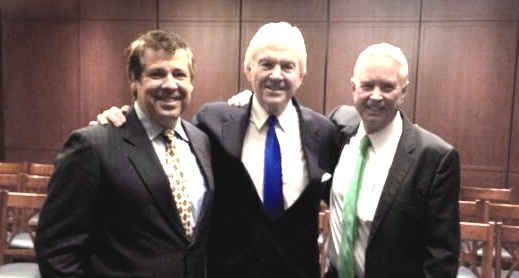
From the left: Steve Moore, John Douglas, and Michael Heavey.
In a room for hire at the Congress they made presentations of their misleading takes on the case to a near-empty room.
Senator Cantwell was apparently there briefly but took off as soon as she could. No other elected leaders were seen to be there.
There was seemingly no media coverage except for a sole post by another Knox apologist on the Infamous Ground Report.
These are hardly the most impartial or for that matter truthful and accurate observers of the case.
Click through for our numerous takedowns of the hapless Steve Moore, and John Douglas, and Michael Heavey.
Thursday, August 29, 2013
Amanda Knox Dithering Over Court Appearance For Appeal Going Over Very Negatively In Italy
Posted by Peter Quennell
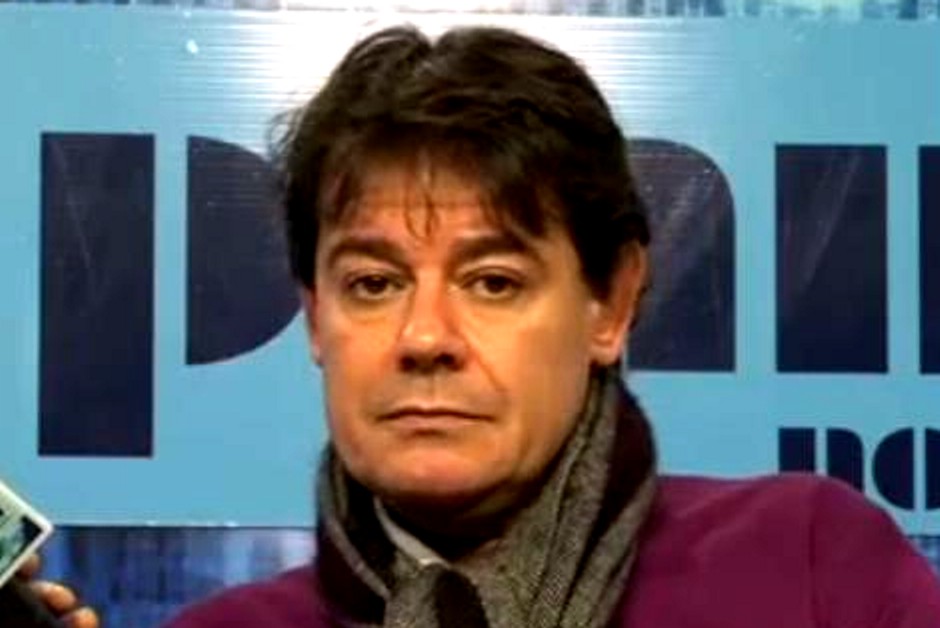
[Above: the outspoken political leader of the region of Umbria Lignani Marchesani warns Amanda Knox]
Amanda Knox has her name on a book that maliciously slimes everybody she ever encountered in Italy. Then she repeatedly goes on TV whining about how people dont like or trust her.
Guess what? Italians are seeing those same wild accusations as being one self-created reason why Knox seems to lack the guts to head for the appeal court. She would be put face-to-face with many of those that she slimed. How embarrasing.
The other reason of course has applied since 2009: Italians believe she really did lead a very cruel murder pack, killed someone vastly more gifted and worthwhile than herself, and now is lying to the American public in the hope that they will insist their government ignores any arrest warrant for Knox from Italy.
She sure has a real knack of making things worse for herself. No-shows are very rare in Italy and they are seen as not only very cowardly but a sure sign of the person’s guilt. Our main poster Jools translated this tart threat from the leader of Umbria’s regional government which is posted on the regional assembly website.
MEREDITH KERCHER MURDER: “IF AMANDA KNOX DOES NOT COME BACK TO FACE THE NEW TRIAL, PERUGIA SHOULD REVOKE THE SISTER CITIES-TWINNING- WITH SEATTLE”.
The chief regional councillor Andrea Lignani Marchesani (Fd’I) seeks to revoke the twinning of Perugia with Seattle, if Amanda Knox does not return to Italy to stand trial for the murder of the British student Meredith Kercher.
“Headlines were not needed nor a crystal ball to forcast that Miss Amanda Knox would carefully refrain from returning to Italy to face the new appeal process. The annulment of the judgment at the Supreme Court shows how the references to international pressures were not unfounded and a clear abdication of our sovereignty for the sake of interests that have nothing to do with justice.
“No need to emphasize once more how the city of Perugia, the Umbria [region] and the University have damage to their image and finances from this tragic event, without forgetting the human aspects and family of the victim.”
Andrea Lignani Marchesani calls to revoke the twinning between the cities of Perugia and Seattle, birthplace of the American woman on trial in Italy. According to Lignani, “The city of Seattle, linked in a sister cities twinning for twenty years with Perugia, lost no time during the time Amanda was in custody to criticize our capital city, either by revoking of the naming of a park [in honor] of the city of the Griffon or by petitions tending to the withdrawal of the twinning itself.
“Perugia has no need for undesirable relationships and should, in this situation where a wound of its recent history is being reopened, should proceed to counter offensive.
If Amanda, as is almost certain, does not show up at the trial and does not face the verdict of the Italian justice system, Perugia must withdraw it’s twinning with Seattle. Court judgments are meant to be respected and must be executed, this is what is repeated every day, and this must also apply to the Seattle citizen Amanda Knox.”
As explained in the post below, the Italian court has many ways of applying its own powerful pressure. It could for example put Knox’s entire defaming entourage on trial, including her own dad, and see them all labeled as felons worldwide.
More on this in our next post, about Frank Sforza, which explains all the grief his own meltdown in court could rain down.
Thursday, June 20, 2013
The Florence Palace Of Justice Where Sollecito And Knox Are Expected To Be Seen In Court Soon
Posted by Peter Quennell
This is a video of a recent light show. The soundtrack leaves something to be desired, but the huge new courthouse looks amazing at night.
We posted previously here on the new Palazzio di Giustizia, which is one of Europe’s largest and most modern. It only came into full operation this year.
It is reported today in UK newspapers that Knox and Sollecito have just been having a meeting in the vicinity of New York, maybe to sort out a common narrative once and for all. Our betting is that each will appear in the Florence court, not least to keep a close eye on the other and to attempt to warm the judges to themselves.
However, their nasty and dishonest books have not made things any easier for them, and have led to a lot of negative reaction in Italy where they have been discussed on TV. It is easy to spot where in many places the two texts conflict, and also where (as demonstrated in the two post below) they also contradict many accepted well-documented facts of the case.
Both books are being considered as substantial new evidence, and the prosecution will ask the appeal court if they can be included in.
Both books are also being investigated, by the chief prosecutors in Florence and Bergamo for separate new felony charges, as they appear to constitute substantial lllegal attempts along with the internet vilification posted by the likes of Preston, Fischer and the Moores, to inflame and mislead public opinion during an ongoing legal process.
The writers have also sought to undermine the officers of the court, by accusing them of serious crimes, again as illustrated in the two posts directly below. Many Italians and Americans with “relevant information” could be called to testify for the prosecution or the defenses. They will probably be asked to explain their own inflammatory campaigns and may face charges of their own. Again, Preston, Fischer and the Moores seem to have painted targets on their backs.
Results of both investigations, together with any new charges against Sollecito, Knox, and their entourages, should be made public well before the new appeal of Meredith’s case gets under way.
If the two are indicted on new charges for the books, as expected, that will mean more to explain, more to try to harmonize upon, more goodwill lost, and more legal bills.
If their Italian lawyers recklessly promoted these daft projects, as texts in the books themselves suggest, the lawyers could all face both contempt of court charges and malpractice suits from their clients.
Nice work….
Saturday, May 18, 2013
Seeds Of Betrayal: In Interview Knox Reveals To Italy Her Considerable Irritation With Sollecito
Posted by Our Main Posters
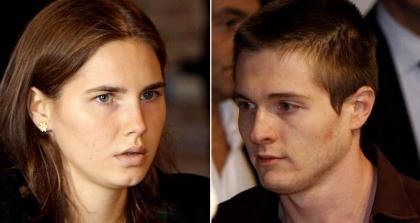
For some odd reason, Amanda Knox has decided she is not loved enough in Italy.
Could it be because she is widely seen to have lied her way through trial, came across as loud, self-absorbed and callous in her 2009 testimony and court interventions, served three years for framing her her kindly employer, was reported as being just as grubby and tin-eared and sharp-elbowed as ever in prison, slimed Italy though her cohorts in much of the English-language media after her 2011 release, and has now written an illegal blood-money book which once again slams a benign Italy?
In particular it slams the justice system, one of the most popular and trusted institutions in Italy, and its officers of the court, with more proven lies and contradictions with past testimony being unearthed daily.
Apparently in Knox’s mind it was all really Guede’s and Sollecito’s faults.
It was they who tarnished her image. Here in an interview in the current Oggi (which appears just as in contempt of court as last week’s Oggi article now the subject of a criminal investigation) she sets Italians straight.
Translation here was by our main poster Miriam, who is herself in Italy - and in disgust.
AMANDA KNOX: ITALIANS; WHY DON’T YOU BELIEVE ME?
Amanda Knox answers the phone with a bright voice and no signs of fatigue. Strange. She is a veteran of a promotional tour that would have knocked-out a bison. Her book “Waiting to be heard” is selling like mad [it is?] but it will not be published in Italy: our publishers have a - sound - suspect that it would set off a number of complaints for defamation, and they have decided to not publish it.
“I’m sorry” she says. “The Italians believe that I am full of hate for them, but if they had the opportunity to read my book they would discover that there is not a trace of anger in it. It hurts that so many believe that I am guilty, that I wrote the book out of arrogance, for money. It is not true.” Says Knox venting her frustration.
Following the Cassazione’s decision on March 26 to redo the appeal process - which had absolved Amanda and Rafaele Sollecito - the British publishers also pulled back.
“They asked me if I wanted to postpone the book launch. But it is my turn to talk now, and I do not intend to alter my story just because somebody threatens to sue me.” Amanda is nothing if not pugnacious. “Compared to how I was before I came to Perugia, I am quieter, even timid. My family is disappointed: the sunny happy Amanda no longer exists.”
Your personality - the way you reacted to Meredith’s death - caused you many problems at the time.
“People involved in a tragedy can react in many different ways, and your behavior can be manipulated to reinforce the idea that you are the one who is guilty.”
What are you referring to?
“To the infamous images taken outside of the small villa on the day Meredith’s lifeless body was found. Those images were cut and obsessively repeated, so as to only show Raffaele and me kissing.” The message was clear: “their friend is dead and all those two think about is kissing.”
What were you feeling at that moment?
“I hadn’t understood what had happened; I had not accepted the fact that Meredith had died in such a terrible way. I felt lost and sad. I was desperately trying to understand. Raffaele kissed me to console me: since I did not speak Italian yet, there was a linguistic barrier between us that prevented us from giving each other verbal support. And then, to re-enforce the strangeness of my behavior, there was the contrast of the cries of my roommate Filomena Romanelli. She is Italian, she had understood. She had seen Meredith’s room, the body, the blood. Not me: I was in total confusion.”
In the book, Honor Bound, Sollecito writes that your behavior that day was “embarassing”
“I don’t think he was embarrassed . I can understand that he would find me “clingy”. I depended on him completely; I was absolutely clingy. However, he knew how they were looking at us, while I hadn’t considered at all how people might have judged us. I was simply reacting in my lost and disoriented way.”
One of the PMs believes that Guede didn’t act alone. Could he have had an accomplice?
“I can only base my opinion on what the prosecution brought to court.”
And?
“They found another person’s DNA in Meredith’s room, a person that has never been identified. A smaller amount of DNA than Rudy’s. There is Guede’s bloody handprint on the wall, his footprint, his DNA on Meredith’s body. This evidence leads me to believe he acted alone.”
John Kercher, Meredith’s dad, maintains that his daughter had studied karate as a child, and that she would have fought to survive. He believes one man would not have been able to subdue her.
“Of course Meredith fought, but what could she have done against an armed man? Rudy is athletic, and is not small. Mez was minute, she maybe weighed 54 kgs, what good could have Karate done her? Even a man if faced against the likes of Guede, armed with a knife, would not have stood a chance.”
How do you explain Rudy’s calm countenance during the trial? Before being arrested he had told a friend - Giacomo Benedetti - on Skye that you and Raffaele had nothing to do with the murder. After being arrested he started accusing you.
“Yes, it is a strange coincidence. I do not know if he changed his story based on his own ideas or those of his lawyers or the prosecution. I only know that after his story changed, the PM began calling him “poor Rudy” to demonstrate how fragile he was, and consequently how easily manipulated by me.”
When and why did you break up with Raffaele?
“When he “broke” my alibi (during a police questioning, Raffaele claimed to not remember if Amanda had left the house the night of the murder, editor’s note.) It was a shock for me.”
“A shock that combined with the fact that we did not communicate for a long time while in prison erased my feelings for him. In prison I had to focus on survival and put love aside.”
Back in Seattle, James Terrano became your boyfriend.
“We had been together in university. While I was in prison, we wrote a lot, but just as friends. When I came back home, we began looking at each other differently.”
Do you live with James?
“No. At first, I lived with a friend (Madison Paxton, who had moved to Perugia to be closer to her, editor’s note) now I live alone. James is often at my place, we’re very close, but we don’t live together.”
Did you see a psychiatrist to get over your prison experience?
“Only once, I started crying and never went back. I talk with my friends and with my family; I don’t need an “external consultant.” Writing the book was extremely helpful; I freed myself of all my anger and my wounds.”
What will you do now?
“I took a break from university to write my book; I’m going to go back and would like to graduate next year. I would also like to write other books, if I can afford do. My financial future is very uncertain.”
But everyone says the advance on the book was fantastic.
“I’ll just say that I still have not been able to meet my first goal: repay my family for all expenses incurred in defending and staying close to me.” (One and a half million dollars, editor’s note)
People have also mentioned a movie.
..
“I’ve heard the same. I don’t know how being on the set would be; perhaps not as terrible as I imagine.”Is there anything you regret?
“Yes. I regret not having immediately contacted Meredith’s family, of not having expressed my feelings and sorrow to them. At the beginning, perhaps, it would have been possible. It hurts to know that John Kercher believes I’m guilty, and that this belief is based on faulty information. I had hoped that once absolved, the Kerchers would have believed me. But that didn’t happen.
Maybe the new trial will draw out the truth
“That is up to Rudy, but I doubt he will do it.”
In May 2014, Rudy could receive the first permit allowing him to enjoy a few days out of prison.
“That’s crazy. It’s simply insane for them to let a guilty man loose because they refuse to admit they were wrong about me.”
Yes Rudy! What about that? Why did Knox’s own lawyers and the Supreme Court accept that overwhelming evidence proved three people did it?
And why did you say she did it? And why do her own parents believe she did it? How did you accomplish those tricks? Amanda says: speak up.
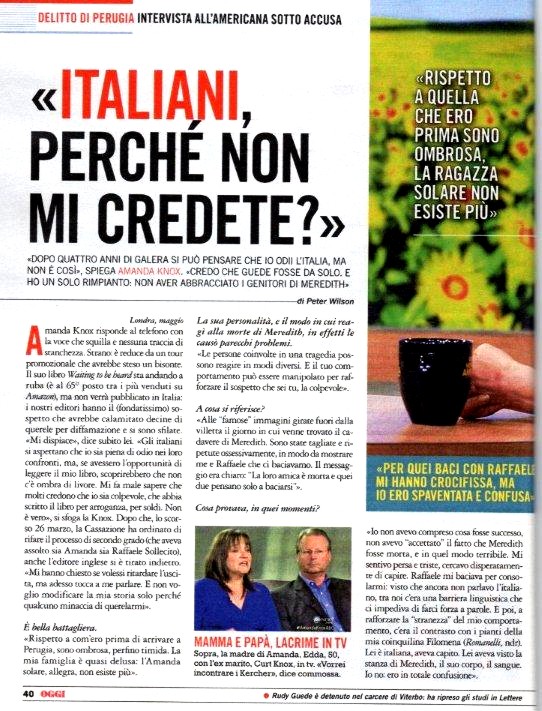

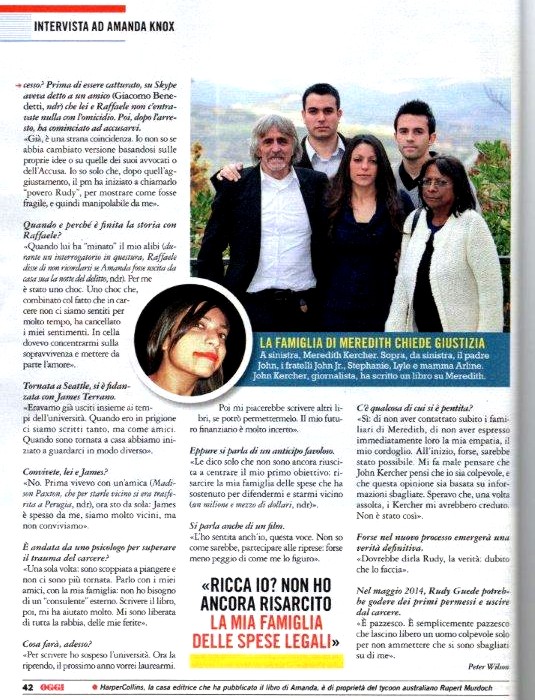
Saturday, April 06, 2013
Giuliano Mignini Promotion Places Him First In Line For Prosecutor General of The Region Of Umbria
Posted by Peter Quennell
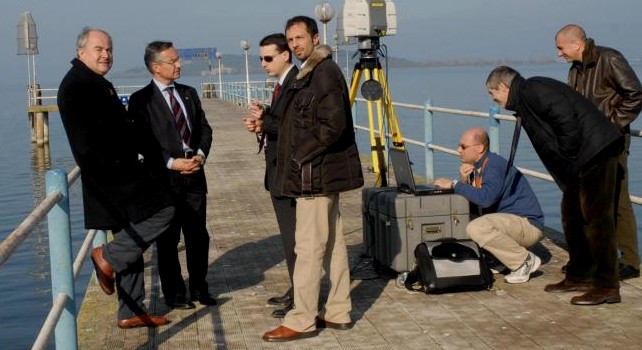
[Above: Giuliano Mignini at left at Lake Trasimeno where Dr Narducci’s body believed bound was recovered]
Umbria of course is the Region for which Perugia is the capital and the current Prosecutor General is Dr Galati who will soon retire.
The post that the popular Dr Mignini was promoted into on his high-scoring merit this past week is one of three deputy prosecutor general posts. The promotion was delayed because of the rogue prosecution against him which Cassation annulled, but he is the most senior and most high-scoring of the three so he should succeed Dr Galati.
We will post the full story (it is a long and impressive one) after our series of posts on the Cassation outcome is done. The story includes an almost unprecedented THREE Cassation wins in just the past several months.
- One obviously was Dr Mignini’s role in the overturn of the Knox-Sollecito appeal and confirmation of Knox’s felony conviction. His main role was to have presented an error-free case at trial in 2009 resulting in the solid grounding of the Massei Report just praised by the Supreme Court.
- One was the final termination of the spurious prosecution against Dr Mignini and Dr Michele Giuttari in Florence by a rogue prosecutor who was desperate to cover his tail after he was (legally) caught on tape incriminating himself.
- One was the Cassation decision to permit the reopening of the MOF-related Narducci case and to confirm that investigations and prosecutions against nearly two dozen who had been seemingly obstructing justice may proceed.
Congratulations to a fearless and effective prosecutor. We will update his full story here soon.
Wednesday, April 03, 2013
The Real Catastrophe For The Defenses That Was The Chieffi Supreme Court Ruling
Posted by Machiavelli
1. Overview
On Tuesday March 26, nine judges of the Rome Supreme Court of Cassation led by the respected Dr Chieffi quashed the previous acquittals of Amanda Knox and Raffaele Sollecito for the murder of Meredith Kercher.
The Supreme Court annulled almost the entirety of the 2011 Hellmann-Zanetti appeal verdicts, declaring the appeal outcome completely invalid on five of the six charges. The Court only upheld the sixth charge which made definitive Knox’s conviction for calunnia for which she had been sentenced to three years.
Calunnia is the crime of maliciously placing false evidence or testimony against an innocent person, something the Italian Criminal Code considers not as criminal defamation but as a form of obstruction of justice, a more serious offence.
Worse for Knox, the Court annulled a part of the appeal verdict which had dropped the aggravation known as continuance, the aggravation that acknowledges a logical link between the obstruction of justice and the murder charge.
2. First reactions
Once the dust has settled, the defendants and pro-Knox and pro-Sollecito supporters and defences may finally realize how severe a defeat has been dealt to their side.
Most American journalists were completely unprepared for and very surprised at the outcome. But most Italian commenters and a very few others elsewhere considered the outcome quite predictable (the criminologist Roberta Bruzzone for example hinted so in written articles, so did Judge Simonetta Matone, as well as John Kercher in his book, and many others too).
This really is a catastrophe for the defences. A complete annulment of an acquittal verdict is just not frequent at all. They do occasionally occur, though, and this one appeared easily predictable because of the extremely low quality of the appeal verdict report.
For myself I could hardly imagine a survival of the Pratillo Hellmann-Zanetti outcome as being realistic.
I previously posted at length on the Galati-Costagliola recourse (that is an important read if you want to understand all angles of the annulment). I argued there that a Supreme Court acceptance of the verdict would have so jeopardized the Italian jurisprudence precedents on circumstantial evidence that it would have become impossible to convict anyone in Italy at all.
The previous appeal trial obviously violated the Judicial Code as it was based on illegitimate moves such the appointing of new DNA experts for unacceptable reasons. It contained patent violations of jurisprudence such as the unjustified dismissal of Rudy Guede’s verdict on a subset of the circumstantial evidence. Hellmann-Zanetti even “interpreted” the Constitution instead of quoting Constitutional Court jurisprudence.
They omitted a number of pieces of evidence, literally “forgetting” them or dismissing them without providing an argument (they should have, being an appellate trial based on the previous findings and arguments of the lower court). The appeal trial had obvious illogical contradictions on a macro level, such as the contradictory putting together of the conviction for calunnia and the acquittal on the murder charge (ignoring a logical link required by statute without introducing any reason at all).
The Hellmann-Zanetti verdict was also based on an illogical processing of all pieces of evidence (such as the dismissal of Nara Capezzali’s evidence without logical reason, even after calling her “credible,” and that of Quintavalle; and attributing the bloody footprint to Rudy Guede on the basis of some ludicrous reasoning).
The appeal verdict basically ignored the concept of “a contrario” evidence, like concluding that the luminol footprints are probably not in blood but in some other substance and not related to the murder (despite failure to indicate any alternative substance nor any reasonable scenario).
The verdict was also biased with open prejudice in favor of two of the suspects in assuming they would be unlikely to even socialize or hang out together with the third, based on social or racial discrimination (two whites from good-looking families are called “good fellows” while the third is “different”).
Beyond the glaring, major faux pas in procedure, the verdict’s low quality, unlawfulnesses, and hypocrisy in its reasoning tended to be pervasive and obvious through all its paragraphs, and possibly this also could have caused an aura of distrust toward the work of the Hellmann-Zanetti court.
One could assess the strikingly low quality of the appeal verdict especially by comparing it to a sophisticated recourse such as the 100-page Galati-Costagliola Supreme Court appeal. While nobody could anticipate with total certainty the Supreme Court decision between the Galati-Costagliola appeal and the Pratillo Hellmann-Zanetti appeal verdict, to good legal eyes the outcome would be as uncertain as the result of an England versus San Marino football game!
EACH of the eleven single mistakes, plus EACH of the six “method” mistakes pointed out in the Galati-Costagliola recourse could by itself have been a sufficient cause for the annulment of the acquittals.
The redundancy of reasons and remarks by Cassation sheds light on the judgment shortcomings from many different angles, and all the reasons presented for the recourse were certainly assessed by the Supreme Court.
But on the practical side, most probably the Hellmann-Zanetti verdict did not even survive beyond the first mistake. The appeal verdict most likely crumbled completely from the very beginning on reason #1, the illegitimate appointing of new experts by Hellmann-Zanetti to re-examine the DNA.
But even given that the defences’ defeat could be foreseen, I never expected the defeat to pervade to this extent.
I thought the appeal verdict might be quashed entirely and a new appeal would start from scratch. But the Supreme Court went further and decided to “save” only the parts of the verdict that were unfavorable to Knox, and declared her conviction for calunnia definitive.
Meanwhile, the Court accepted the Calati-Costagliola reason #10, and quashed the part that denied a logical link between calunnia and murder.
The Supreme Court thus sends Raffaele Solecito and Amanda Knox back to appeal trial, but this time Amanda Knox will enter the trial as a felony convict with a definitive criminal record, which ““ the Supreme Court hints ““ is to be considered logically linked with the charge of murder.
Moreover, judges in the appeal that will come next in Florence will have to follow the decisions set by the Supreme Court. Since the Supreme Court’s motivations report has not been issued yet, we still don’t know what points exactly Cassazione will make. But we can expect that several arguments used by Pratillo Hellmann-Zanetti that were “needed” to acquit Knox and Sollecito will be now declared illegitimate.
This might mean that we will not see for a second time such faulty reasoning as “Knox’s statement can’t be used as evidence of lying because it is not true.” It may not be possible to dismiss the verdict that found Guede guilty of concurring in murder “with others” from the set of evidence just because it was “weak.” It may not be possible to deduce the time of death based only on declarations of Rudy Guede.
We also may not have a chance to again see an expert declaring that contamination is “likely” on the sole basis that “everything is possible.” We also may not have another judge attributing footprints without talking about any measurements.

The Supreme Court session began on March 25, and it is only a rare event that a Cassazione session extends over into two days.
The first criminal division of the Supreme Court ““ scheduled to decide on this case ““ was a five-judge panel presided over by Dr Severo Chieffi. His name never did sound like a particularly favorable omen for Knox and Sollecito. Dr Chieffi is a 70-year-old judge, known for being the author of a famous 2008 verdict which definitively closed a notorious criminal case (“the first time a Cassazione hearing attracted massive live media attention”), a verdict among the most quoted in jurisprudence which is known as that “on reasonable doubt.”
Dr Chieffi and his nine-judge panel explained reasonable doubt as to be intended as an “a contrario” concept, the concept used to formulate a logical reasonable alternative. That verdict pointed out the concept of “reasonable” and also stressed that the nature of evidence is “logical”. “Reasonable” depends only on the plausibility of alternatives, not on how conclusive or reliable single pieces of circumstantial evidence are, and a piece of evidence does not require any specific “physical” element or conclusive quality.
The rapporteur judge was Dr Piera Maria Severina Caprioglio. The rapporteur judge goes through the papers of the whole trial and summarizes their content to the other panel judges; the rapporteur and the president are the two who physically write the report (it may sound like irony that both judges have the adjective “severe” in their name). I was told Dr Caprioglio was a rather stiff judge, known for her scrupulosity in procedure matters, and she is also a specialist “and hard liner“ about sexual crime (maybe that’s why she was chosen by Dr Chieffi as the one to do the research on this case).
At the Supreme Court there is also an office known as the Office of Procurator General, which has more than 50 magistrates. The Procurator General appoints a magistrate (normally called the “PG”) to study cases and to make arguments on all cases dealt with in Supreme Court sessions. The PG is considered “neutral” in the sense that their office represents no party only the “precedents” of the court. While the rapporteur makes a description of the case, the procurator makes arguments about the recourses submitted by the parties.
At 10:30 am on Monday, Judge Caprioglio begun her 90-minute speech summarizing the case. She detailed legal events that led to the first Massei-Cristiani verdict, and then the appeal trial led by Hellmann-Zanetti and their verdict.
She sounded rather neutral; hers was a sheer summary with no comment attached. Nevertheless, it sounded most ominous for the defences: right from Dr Caprioglio’s speech, in fact, Knox and Sollecito’s attorneys understood that they were going to lose.
This is because Dr Caprioglio devoted half of her rapporteur time or more to detailing Massei’s first degree trial and verdict, explaining the arguments and evidence used by the Massei court. Such attention was itself ominous to the defences.
A main basis of the Pratillo Hellmann-Zanetti verdict is in fact a series of denials about the work of the lower court, in which plenty of evidence was simply ignored or dismissed without dealing with the first degree conclusions; while the strategy of Giulia Bongiorno was to entirely “replace” the details of the evidence set with a self-made narrative, quite unattached to actual trial events, which somewhat “worked” as rhetoric and in the media.
Yet Dr Caprioglio was not yet the biggest problem facing Knox and Sollecito. The defence was about to face a pincer front, because the Procurator General’s offices did not appreciate the appeal verdict at all.
A bomb went off with the speech of Procurator Riello which followed next.
Dr Riello recalled the points of recourse submitted by Galati-Costagliola, which may sound technical or subtle to those unaccustomed to them. Dr Riello endorsed the radical censures made by Galati-Costagliola and made clear his own view in an overview of the whole verdict. His arguments had the subtlety of an anvil.
To summarize, he basically maintained the appeal judges had conducted an appeal trial as if they were idiots, and followed the paths of logic, procedure and law like sailors without a compass.
Seen from the point of view of the Procurator General, their way of conducting the appeal trial itself was like a journey through a dreadful series of unlawful steps, decisions informally taken without deliberation, and arbitrary and unjustified ordinances. The court simply “lost their way.”
In the body of their findings, it seems they understood almost nothing about the evidence ““ in particular about how circumstantial evidence works. They did not deal with the findings and arguments of the first instance court as they should have, as if they didn’t exist, and they trivialized the previous legal material.
In fact Dr Riello sounded almost sarcastic; outraged by the incredibly amateurish work of this appeal court, he tended to detail the merit of questions and was interrupted by the president asking him to stick to the discussion on the table.
At the close of his speech, he called the appeal verdict “a rare concentration of law violation, a monument to illogicality.” He said “the judge of merit lost their way in this trial.” Dr Riello noted “they fragmented, they parceled out the pieces of circumstantial evidence.”
He implied not only incompetence but a kind of disingenuous attitude: “The Court employed a fair dose of snobbism for trivializing the first degree verdict, reducing it to four elements. A very imprecise and superficial synthesis.”
He went beyond the criticism expressed in the Galati-Costagliola appeal when he described an obvious bias of the appeal court “not in just a few passages of the second instance verdict ““ it’s as if the defendants should benefit from a kind of anthropological and cultural immunity, in relation to the events.”
He criticized Pratillo Hellmann’s dismissal of Amanda Knox’s handwritten memoir, and recommended that a new appeal trial must in part be based on that statement as “it is a usable document”; and he stressed that in his opinion “the scream heard by Amanda is a significant datum, of great importance.” The behavior claimed by Knox on the morning of November 2, 2007 in his view was “chilling” and her taking a shower in a cold bathroom is a “chilling detail.”
Dr Riello concludes by saying: “These are all conditions for not letting the curtains close on an upsetting and extremely serious crime for which the only culprit found up to the present day is Rudy Hermann Guede, who has been addressed through a Lombroso-style assessment, either calling him a thief, a criminal or a drifter. He didn’t confess and he was not convicted by another court for concurring in a crime together with others, maybe with ‘ectoplasms.’” (A reference to Cassation’s previous decision that he did commit the crime with others, but Hellmann-Zanetti identified no other people; hence ‘ectoplasms.’)
The Prosecutor General also dealt with the DNA experts’ report which defined the previous results as “unreliable.” He implied that the report and its language were used as a pretext by the defences “as a tombstone, while in fact it is not.” It was used as a tool to focus the trial on the DNA and steer it away from the whole evidence set, to “bury the set of pieces of circumstantial evidence which all have their vital value.”
The rhetoric of the defences aimed to “blame everything on those involved in the scientific police who are almost depicted as bunglers; however they are not brigadiers playing with toy chemical sets, they are in fact a highly qualified department and they do employ cutting-edge technologies.”
A severe legal bashing like the Riello speech is not at all common at the Cassazione. As I heard the news on the radio, law experts commented that the event was unusually serious, and they hinted that its consequences may lead to the setting of a historic jurisprudence precedent.
Francesco Maresca ““ who brought his mentor Vieri Fabiani with him ““ endorsed the recourse points and made points similar to Dr Riello’s. He pointed out that a major flaw of the appeal trial was to focus on two DNA instances as if the case was based on them. The court appointed experts to review items with no legitimate basis, they provided an inconsistent explanation for their steps, and then they refused to analyze and introduce further evidence, totally contradicting themselves and also violating the code.
Their criteria for choosing which piece of evidence to discuss or review were totally contradictory, and their series of steps egregiously violated a series of procedural conditions that any court is supposed to follow.
The analyzing of the knife DNA sample and bra clasp sample as pieces in isolation is a sort of device that serves a defence made-up narrative; the focus on “disputed” items and the re-make of a narrative about legal events is simply a defence strategy which is aimed at the media rather than official court proceedings. For the Kercher family, the evidence points to the guilt of Knox and Sollecito beyond reasonable doubt.
The evidence, explained Maresca, consisted of numerous pieces of evidence and reasoning, that were simply not dealt with by the appeal court. The whole process was “non-transparent” and the result is also contradictory given that Knox is indicted by her own words on the crime of calunnia.
Maresca explained that the appeal verdict is riddled with many flaws and errors in the merit of the facts which cannot be assessed by the Cassazione court, but there are also patent violations of law which are “strong and obvious” and of the most serious kind.
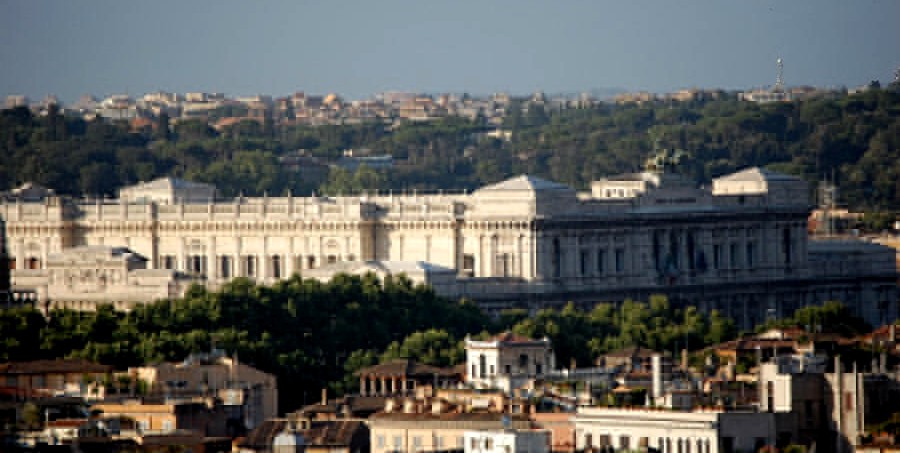
Then it was the defence attorneys’ turn. Giulia Bongiorno knew she would need to apply the full power of her best rhetorical skills: she pointed out a factual error in the recalling of Prosecutor Riello and threw herself head-first into the merit of the evidence.
She even made FOA-style overstatements on the number of Guede’s DNA instances: “So many genetic traces of Rudy Guede were found in the bedroom of the murder, Amanda and Raffaele’s DNA would have been found too if they had been there.” (Her claim is false: in fact, only four samples yielding Guede’s DNA were found in the bedroom, and some were very scant.)
Bongiorno focused on investigation mistakes and complained that Raffaele Sollecito “was put in jail because of a shoe print found beyond the duvet which covered the body, a print that was attributed to Guede.” She also commented on Knox’s handwritten memoir and again put forward the claim ““ already rejected by all the judges of all instances ““ that the statement should be “not usable” because there was a “blackout” of defendant guarantees. Apparently, Bongiorno did understand that the most dangerous threat, and the actual battleground, would be about the danger of having Knox now definitively convicted for calunnia.
Bongiorno said “we do not want to put the scientific police on trial” but then said the point defence demonstrated was that they made “an infinite series of errors.” In fact, Bongiorno’s speech largely consisted of the well-known defense stance of pointing the finger at a list of supposed wrong-doings by the police.
Bongiorno’s argument of pointing out supposed “police mistakes” would probably ring true to Knox’s Amarican supporters, who may find these arguments convincing and effective.
In fact, it was obvious that Bongiorno’s position was extremely weak, and that her arguments were not going to have any effect. The weakness of Bongiorno’s arguments was obvious from the start because she backed into arguing the case only on the merit of investigation techniques.
Her arguments would maybe resonate effectively with uninformed spectators, but they had already failed in those courts that were legitimate, and they have no consequence from a legal standpoint. Talking about supposed mistakes during the investigation and supposed bad behavior of police are good to build a narrative for journalists, but they would have zero effect on expert judges.
I think she knew she was going to lose, but besides being a lawyer, Giulia Bongiorno is also a smart public person, and she plays in the public arena as well as in a court of law at the same time. Her technical stances are all wrong, but she knows she will be remembered well for her good-looking performance.
The president did not interrupt her, showing due politeness toward the defence attorneys. But no attorney would convince the Supreme Court by simply saying “we demonstrated that the investigators made mistakes.”
In order to seek to obtain some positive effect, she should have argued in favor of the Pratillo Hellmann-Zanetti appeal verdict on points of law, and put forward arguments for their legitimacy; for example, an argument in response to point #1 of Galati’s recourse claiming that the appointing of DNA experts was unmotivated.
Luciano Ghirga and Carlo Dalla Vedova had to take care of their own recourse against the conviction for calunnia on the false accusation of Patrick Lumumba. Their line of defence on this point was the same ““ and could be nothing else ““ than what they maintained though all the previous instances. Dalla Vedova deals with the handwritten note where he understands “Amanda says she is confused, she does not care about what she said.”
They reintroduced the myth that “she had been interrogated by the investigators for 54 hours.” They explain ““ almost a paradoxical argument ““ that the document was “a defensive paper” while then becoming one of the elements on which the charge of calunnia was built. They stressed that “she wanted to cooperate” with the investigation and that “she was a friend of Meredith.”
A failure of their arguments was easily predictable because their recourse was built on points that had already failed at lower instances. Some time ago before this appeal, I posted this criticism of the Ghirga-Dalla Vedova recourse on Knox’s calunnia conviction to the Supreme Court:
Pages 3-11: The first argument is about the non-usability of the evidence for the crime of calunnia.
Such an argument is basically the re-proposal of the same argument that had been already dismissed by the Supreme Court in 2008, and subsequently by Massei-Cristiani in 2009 and also by Pratillo Hellmann-Zanetti. Therefore, it is an especially weak argument. Ghirga-Dalla Vedova do attempt to use it again at the Supreme Court because it is what they have.
Just like Giulia Bongiorno will likely recall it too, just like she attempted to request of nullification of Stefanoni’s testimony on procedure grounds before Massei, which was rejected again by Hellmann-Zanetti (the Knox supporters have such a spun perception of the proceedings, they apparently don’t see how some basic defensive claims were rejected by all judges).
Pages 11-14 complete the first argument, addressing the further requirements of the crime of calunnia (maliciousness and voluntarity).
Basically, this point contends that the false accusation was not voluntary or not malicious. The only usable point in my opinion in this reasoning consists of one line, which recalls that Hellmann-Zanetti did not acknowledge the aggravation of continuance for the crime of calunnia. But this point has no consequence because it is a weak point in Hellmann’s verdict itself which violates jurisprudence and logic itself.
The other claims at this point are basically useless; they attack the Hellmann verdict in a way peculiar to the prosecution appeal with an opposite stance. But in fact “not knowing” that someone is factually innocent obviously cannot be extended to an absolute meaning; Hellmann is illogical on that, because he dismisses the logical link with the murder without explanation.
Pages 14-18 speak about the alleged “extreme exhaustion” of Knox in order to exculpate her of her confusion and falsehood.
This argument tends to be a stronger attempt to use some of the contradiction in Pratillo Hellmann-Zanetti, using as a starting point the fact that H-Z did state that Knox was allegedly under excessive pressure. They convicted her for calunnia nonetheless. I think this argument won’t go too far, for two reasons.
First, because it’s basically on the merits; it quotes the whole writing of Knox and requests the SC to directly re-assess the sincerity of her words, something which the SC are unlikely to do.
Second, because while on the one hand there is a contradiction in H-Z as they accuse her of calunnia but do not use her writings as an evidence of lying on the other crime, and they reject the continuance despite the obvious link between the calunnia and the murder, on the other hand the contradiction addressed by Ghirga is weaker. There was in fact no factual finding about “excessive pressure,” neither in the H-Z appeal trial nor in previous Massei testimonies.
As for jurisprudence, pressure and “psychological alteration” itself is not enough to cause a loss of mental faculties to understand and will. Basically, most crimes are committed in a state of psychological stress or alteration, and people are responsible for themselves notwithstanding. The faculty to understand and will is not a psychological condition; it is something that affects the cognitive and decisional functioning of the brain on more basic functions, and requires a medical assessment.
So there is no way the argument of Ghirga-Dalla Vedova can overturn a conviction for calunnia based on an argument of psychological conditions: they have no basis; and there is no consistent ground to assert “excessive pressure” either.
Pages 19-20 is a very short argument about two articles of the code that Ghirga puts in in relation to a case of defensive rights.
This is an argument I am unable to assess clearly. This point basically claims Knox is somehow protected by the law because of an extension of her rights of defence. I have the feeling this point is wrong, because the boundaries of the right to defend oneself are already fixed and limited by a SC ruling of 2008, and because Article 51 only applies to what she declared as a defendant, but not to what she declared as a witness.
Pages 20-22 is only about the sentencing and not about innocence; it claims that, anyway, even if Amanda is guilty of calunnia, the punishment was too stiff and this severity was not logically motivated by Hellmann. This point is the only that could stand, in my opinion.
After the hearing of March 25 ““ which was the ninth case the Supreme Court panel dealt with that day ““ the panel deliberated for six hours, then adjourned the hearing and scheduled the final decision for the following morning.
The question whether to annul the verdict entirely, or to confirm the calunnia conviction, might have been the cause of some of the extra time needed.
When the Supreme Court has to deal with scheduled cases the relator puts a mark ““ between 1 and 8 ““ indicating the difficulty of the case: 1 is the easiest and 8 is very complex.
Almost all recourses are below 3, while a case like the one on the Narducci investigation a week earlier, involving Mignini, could have been closer to 8. The difficulty of this case is unknown. But because of some sensitive jurisprudence involved and because of the articulation of the recourses, this could have been around 6 or higher.
After retirement of the court, and adjournment to the subsequent day, at 10 am on March 26, the court’s dispositivo was the following:
ENDING THE RESERVATION FROM THE HEARING OF 03-25-2013, [THE COURT] DECIDES AS FOLLOWS: ANNULS THE IMPUGNED VERDICT, LIMITED TO THE CRIMES UNDER CHARGES: A) (INTO WHICH CHARGE C) IS ABSORBED), B), D), E), AND TO THE AGGRAVATING CIRCUMSTANCE UNDER C.P. ART. 61 NO.2 IN RELATION TO CHARGE F), AND REMANDS [THE CASE] TO THE CORTE DI ASSISE DI APPELLO OF FLORENCE FOR A NEW TRIAL. REJECTS THE APPEAL OF AMANDA MARIE KNOX, WHOM IT SENTENCES TO THE PAYMENT OF COURT COSTS AS WELL AS REIMBURSEMENT OF EXPENSES INCURRED IN THE PRESENT PROCEEDINGS BY CIVIL PARTY DIYA LUMUMBA, IN THE AMOUNT OF 4000 (FOUR THOUSAND) EUROS, IN ADDITION TO I.V.A. AND C.P.A., PLUS GENERAL EXPENSES ACCORDING TO LAW.
Thus, Amanda Knox and Raffaele Sollecito are sent back to appeal trial in Florence on all charges related to the rape and murder of Meredith Kercher (a, b, c, d, e). And Knox is definitively declared guilty of the obstruction of justice charge known as calunnia, while the argument denying any logical link between the calunnia and the murder is quashed.
Resources used
The article above draws in part upon a translation into English of news information published by various Italian press sources, which our readers may like to look at directly. A good coverage of the case ““ including Riello’s speech ““ was broadcast by RaiNews 24 and they also have a lot of information on the website. Online updates were provided by Televideo. Commentaries and discussions were hosted on Radio1 - GR Rai. Dr Riello’s comments were reported by Il Fatto Quotidiano and Style.it. There were reports on Libero Italy.it. Also details and chronicles were reported at the end of the day by Il Giornale dell’Umbria. Coverage and the quotes for March 25 were provided by AGI. The dispositivo official document was obtained and published by Andrea Vogt.

